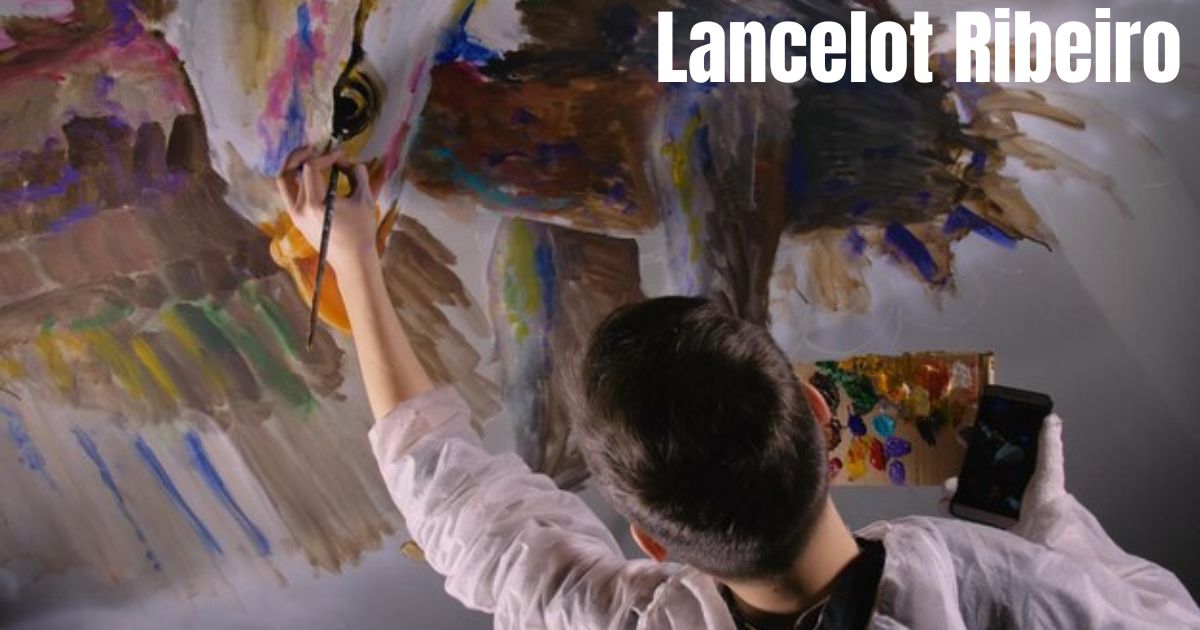Lancelot Ribeiro was a pioneering artist known for his dynamic use of colors, innovative techniques, and unique approach to modern art. His works captured emotions, abstraction, and deep symbolism, making him one of the most significant figures in contemporary art. His artistic journey reflected a fusion of Eastern and Western influences, shaped by his Indian heritage and his life in the United Kingdom. With his groundbreaking use of acrylics and experimentation with new forms, Ribeiro left an indelible mark on the art world.
Early Life and Background
Lancelot Ribeiro was born in 1933 in Bombay, now known as Mumbai, India. He belonged to a Goan Catholic family that had a strong inclination toward literature, art, and intellectual discourse. This environment helped shape his artistic mindset from a young age. Initially, Ribeiro pursued a career in finance, studying accountancy, but his deep-rooted passion for painting led him to abandon traditional career paths. He moved to the United Kingdom, where he studied at the Slade School of Fine Art in London. This formal training played a crucial role in refining his artistic skills and broadening his creative horizons.
Influence of Indian Heritage
Despite moving to the UK, Lancelot Ribeiro’s Indian heritage remained an integral part of his artistic identity. His paintings reflected a deep connection with his homeland, incorporating themes, colors, and cultural motifs inspired by India. The influence of Indian miniatures, traditional landscapes, and vibrant hues can be seen in many of his works. The juxtaposition of Eastern and Western elements in his paintings made them unique and highly distinctive. His art became a bridge between two cultures, merging the richness of Indian tradition with the modernist experimentation of Western art.
The Transition to Abstract Art
Initially, Ribeiro’s work was influenced by figurative and landscape art, but over time, he transitioned towards abstraction. He developed an individual style characterized by bold brushstrokes, non-representational forms, and expressive use of colors. He rejected traditional artistic conventions, choosing instead to explore free-flowing creativity. This transition was not only a personal choice but also a reflection of his evolving philosophical and artistic beliefs. His abstract compositions became a signature element of his career, setting him apart from many of his contemporaries.
Innovative Use of Acrylic Paints
One of the most significant contributions Lancelot Ribeiro made to modern art was his pioneering use of acrylic paints. At a time when oil paints were the dominant medium, he experimented with acrylics, which offered quicker drying times and allowed for spontaneous creativity. His ability to layer colors, blend textures, and create dynamic movement on canvas became a defining characteristic of his work. This innovative approach inspired other artists to explore acrylics as a viable medium, paving the way for new artistic techniques and experimentation.
Themes in His Paintings
Ribeiro’s paintings often conveyed deep themes of chaos, order, spirituality, and existential inquiry. He was fascinated by human emotions and the abstract representation of thought processes. Many of his works depicted surreal landscapes, distorted figures, and symbolic imagery, encouraging viewers to engage with their own interpretations. His use of intense colors and energetic strokes created a sense of movement, reflecting both inner turmoil and artistic freedom. His paintings were not just visual expressions but also philosophical inquiries into human nature and the complexities of life.
The Impact of Migration on His Art
Having migrated from India to the UK, Ribeiro experienced cultural transitions that greatly influenced his work. He often explored the themes of displacement, belonging, and identity through his art. His paintings reflected the struggles and experiences of immigrants trying to find their place in a foreign land. The contrast between his Indian roots and British surroundings provided a rich source of inspiration, leading to compositions that resonated with many who faced similar challenges. This connection to migration and identity made his work deeply personal yet universally relevant.
Recognition in the Art World
Lancelot Ribeiro gained considerable recognition both in India and internationally. His works were exhibited in prestigious galleries and art institutions across the world. Critics and art enthusiasts praised his unique style and contribution to modern art. He was not only a prolific artist but also an advocate for South Asian artists in Britain. He played a key role in bringing greater visibility to artists from diverse backgrounds and worked to create more opportunities for them in the art world. His influence extended beyond his paintings, shaping discussions around representation and diversity in contemporary art.
Challenges in His Artistic Journey
Despite his immense talent, Ribeiro faced several challenges throughout his career. The art world was often resistant to change, and his abstract style was not always well received by traditional audiences. Additionally, as an artist of Indian descent in the UK, he had to navigate cultural biases and limited recognition. However, he remained undeterred, continuously pushing boundaries and refining his craft. His determination to stay true to his artistic vision despite obstacles made him a respected and inspirational figure among fellow artists.
Spirituality and Symbolism in His Art
Ribeiro’s work often reflected a deep sense of spirituality and introspection. He was drawn to the exploration of metaphysical themes, using abstract forms and symbolic elements to convey deeper meanings. His paintings often had a dreamlike quality, with compositions that appeared to exist in an ethereal, otherworldly space. This spiritual aspect of his art made his work not only visually compelling but also intellectually and emotionally engaging. Many of his paintings invited viewers to reflect on their own spiritual and existential beliefs.
Influence on Contemporary Artists
The impact of Lancelot Ribeiro’s work can still be seen in the works of contemporary artists. His bold use of colors, innovative techniques, and abstract expressions have inspired many modern painters. His ability to merge Eastern and Western influences set a precedent for future generations of artists seeking to experiment beyond traditional artistic boundaries. His pioneering use of acrylics also opened new possibilities for painters who wished to explore non-traditional mediums. His influence continues to shape the evolving landscape of modern art.
Exhibitions and Legacy
Throughout his career, Ribeiro’s work was featured in numerous exhibitions across the UK, India, and beyond. His paintings remain part of major art collections, museums, and private galleries. Posthumous retrospectives of his work continue to celebrate his legacy, introducing new audiences to his unique artistic contributions. His role as a modernist painter and his advocacy for South Asian artists have left a lasting impact on the art world. His legacy continues to inspire those who seek to push creative boundaries and challenge artistic conventions.
The Timeless Appeal of His Art
Lancelot Ribeiro’s work remains relevant and compelling even today. His fearless approach to abstraction, his innovative techniques, and his deep exploration of identity and emotion make his paintings timeless. Whether through vibrant compositions, surreal landscapes, or expressive brushwork, his art continues to captivate audiences across generations. His ability to merge spontaneity with profound themes ensures that his work retains its significance in modern art history. His paintings are not just artistic creations but also reflections of a life devoted to fearless expression and innovation.
Conclusion
Lancelot Ribeiro was a visionary artist who redefined modern art through his abstract compositions, innovative use of acrylics, and exploration of deep thematic elements. His journey from India to the UK, his struggles, and his ultimate success as a modernist painter reflect his resilience and creative genius. His paintings serve as a testament to the power of artistic expression and continue to inspire artists and art lovers worldwide. His legacy remains an integral part of the history of contemporary art, proving that true creativity knows no boundaries.

